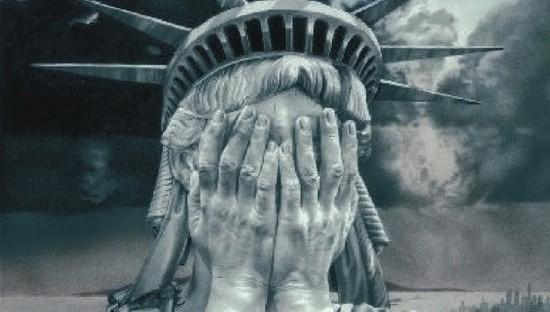Between 100,000 and 240,000 Americans could die from COVID-19 according to epidemiological model projections cited by coronavirus task force members during a White House press conference on Tuesday. “This could be a hell of a bad two weeks,” said President Trump. “Or maybe even three weeks.” Policies that have locked down the economies of the U.S. and many other countries are based to a considerable extent on the dire projections from a variety of epidemiological models. But are they right, asked my Reason colleague Jacob Sullum.
“I’ve looked at all the models. I’ve spent a lot of time on the models. They don’t tell you anything. You can’t really rely upon models,” said Dr. Anthony Fauci, the director of the National Institute of Allergy and Infectious Diseases, who functions as Trump’s coronavirus guru, at a task force meeting, according to the Washington Post. And yet, here we are.
Crudely put, models need validation by matching their projections to actual data. In this case, the outputs of infectious disease models might be compared to how well their projections match data on infection, hospitalization, and mortality trends from past epidemics. Of course, certain parameters such as the basic reproduction number and attack rates will have to be adjusted to take into account the differences between, say, influenza viruses and the novel coronavirus.
It turns out that most infectious disease epidemiological models have not been validated by comparing their outputs to empirical data. A 2018 comprehensive review article in the journal Epidemic of 78 global disease spread models found that model validation is uncommon. Why? Most likely, the researchers suggest, because there is a lack of suitable validation data due to the fact that pandemics are relatively rare events.
A more scathing 2009 study in The American Journal of Epidemiology narrowly focused on the accuracy of various statistical methods for predicting the hospitalization rates of young children for respiratory syncytial virus and/or influenza by matching their projections to seven years of empirical data in Quebec. “No method provided accurate or consistent estimates for both viruses and outcomes,” concluded the researchers. “Because major public health decisions are made and population programs are promoted on the basis of estimates from these statistical methods, investment in their careful validation is essential to guide rational public policy decisions. Until then, their limitations should be made explicit and estimates used cautiously.”
Since models are at best hazy guides to the future, can parsing real-time data from the early stages of this pandemic provide better insights on how it might unfold over the coming months? For example, it would be extremely helpful to know the percentage of infected people who eventually die of the disease.
One often-heard statistic is the “case-fatality rate,” that is, the percentage of people diagnosed with the disease who will die of it. This afternoon that figure stands at 2.5 percent for the U.S. A huge problem is that the magnitude of this figure is significantly inflated because it does not take into account people who are asymptomatic or who suffer and recover at home and thus not come into contact with the medical surveillance system. What we really need to know is the infection-fatality rate, that is, the percentage of all of the people infected who eventually die of the disease.
A new study in Lancet Infectious Diseases attempts to figure out what percentage of infected people in each age cohort will require hospitalization. The researchers aim to determine those rates and the overall case-fatality rate in real time by looking at several constrained COVID-19 datasets derived from near the beginning of the epidemic. These datasets included cases and deaths from a cohort of patients identified in China between January 1 and February 11, and several hundred cases detected outside of China and the passengers on the Diamond Princess cruise ship.
Applying adjustments for demography and location, the researchers found that the case-fatality rate for both Chinese and outside cohorts is about 1.4 percent. This basically matches the Chinese case-fatality rate reported in a March Nature Medicine study.
The researchers take the next step and try to estimate the number of undetected cases in Wuhan by applying the observed prevalence of infections among travelers repatriated on six flights from Wuhan over three days between January 30 and February 1. They ultimately calculate that the infection-fatality rate for COVID-19 in China is around 0.66 percent. This is about six times worse than the rate for seasonal influenza.
Notably, the infection fatality rate escalates with age. For infected people under age 50, well under 0.2 percent would likely die. For cohorts 50-59, 60-69, 70-79, and above 80 years of age, the estimated infection fatality rates are 0.6 percent, 1.9 percent, 4.3 percent, and 7.8 percent, respectively.
In an accompanying editorial, University of Miami statistician Shigui Ruan observes, “Even though the fatality rate is low for younger people, it is very clear that any suggestion of COVID-19 being just like influenza is false: even for those aged 20–29 years, once infected with SARS-CoV-2, the mortality rate is 33 times higher than that from seasonal influenza.”
The researchers’ low-end coronavirus attack rate—that is, the percentage of the population that would eventually be infected—is 50 percent. Assuming 50 percent of Americans were eventually infected, that would yield about 1.1 million deaths from COVID-19.
The big caveat here is that the researchers are trying to hit a moving target and could be missing by a mile. The actual lethality of this disease will become clearer in the next few weeks as more data, especially from population screening with antibody tests, comes in.
from Latest – Reason.com https://ift.tt/2wbjThI
via IFTTT


